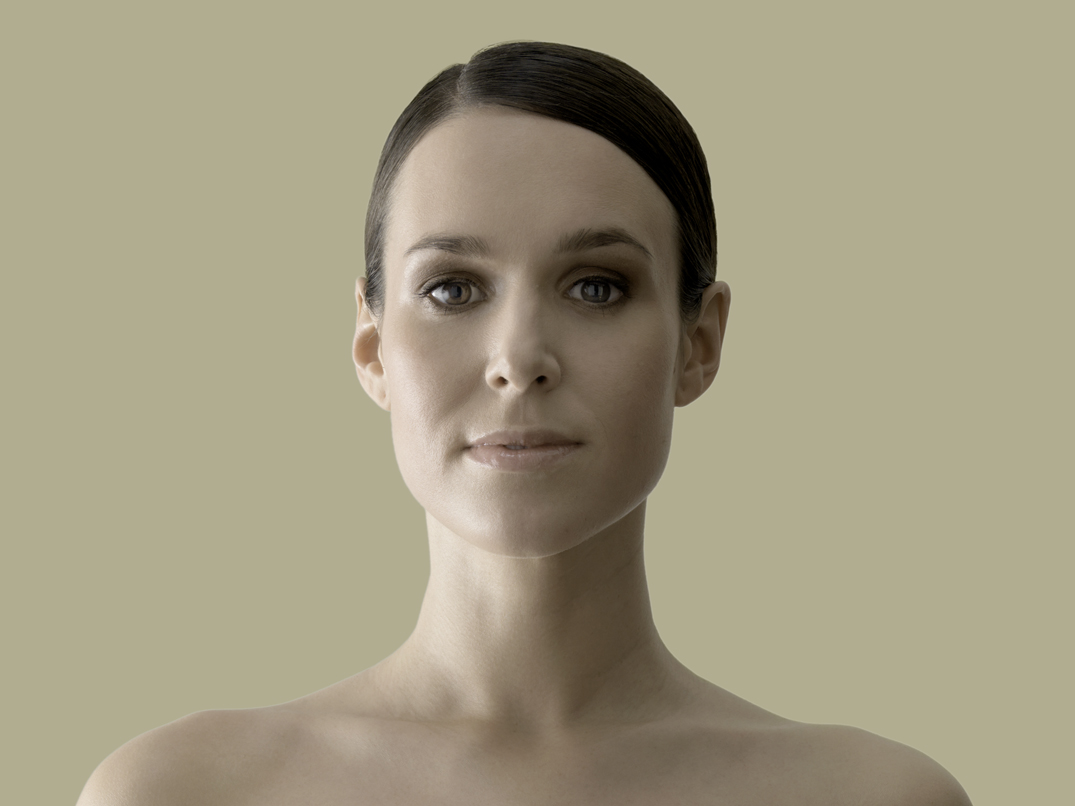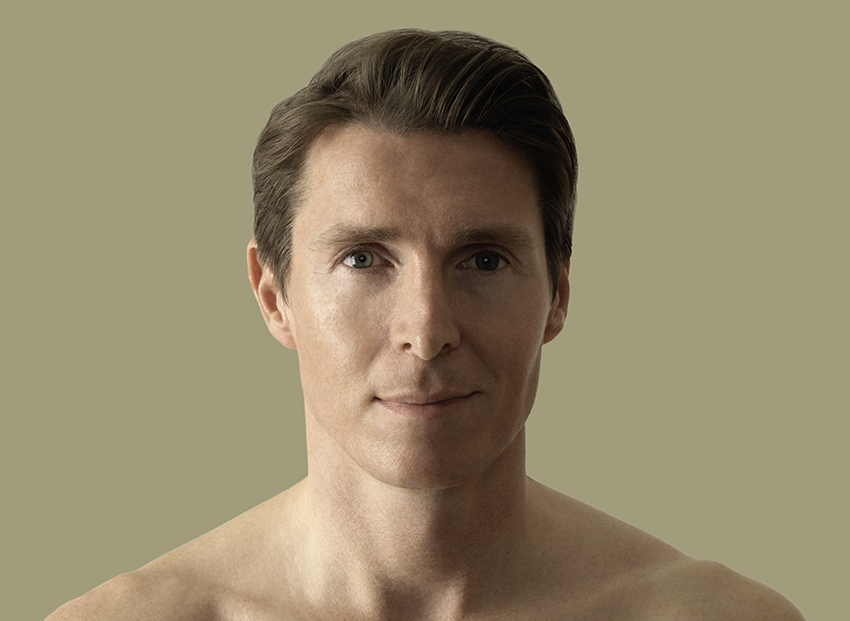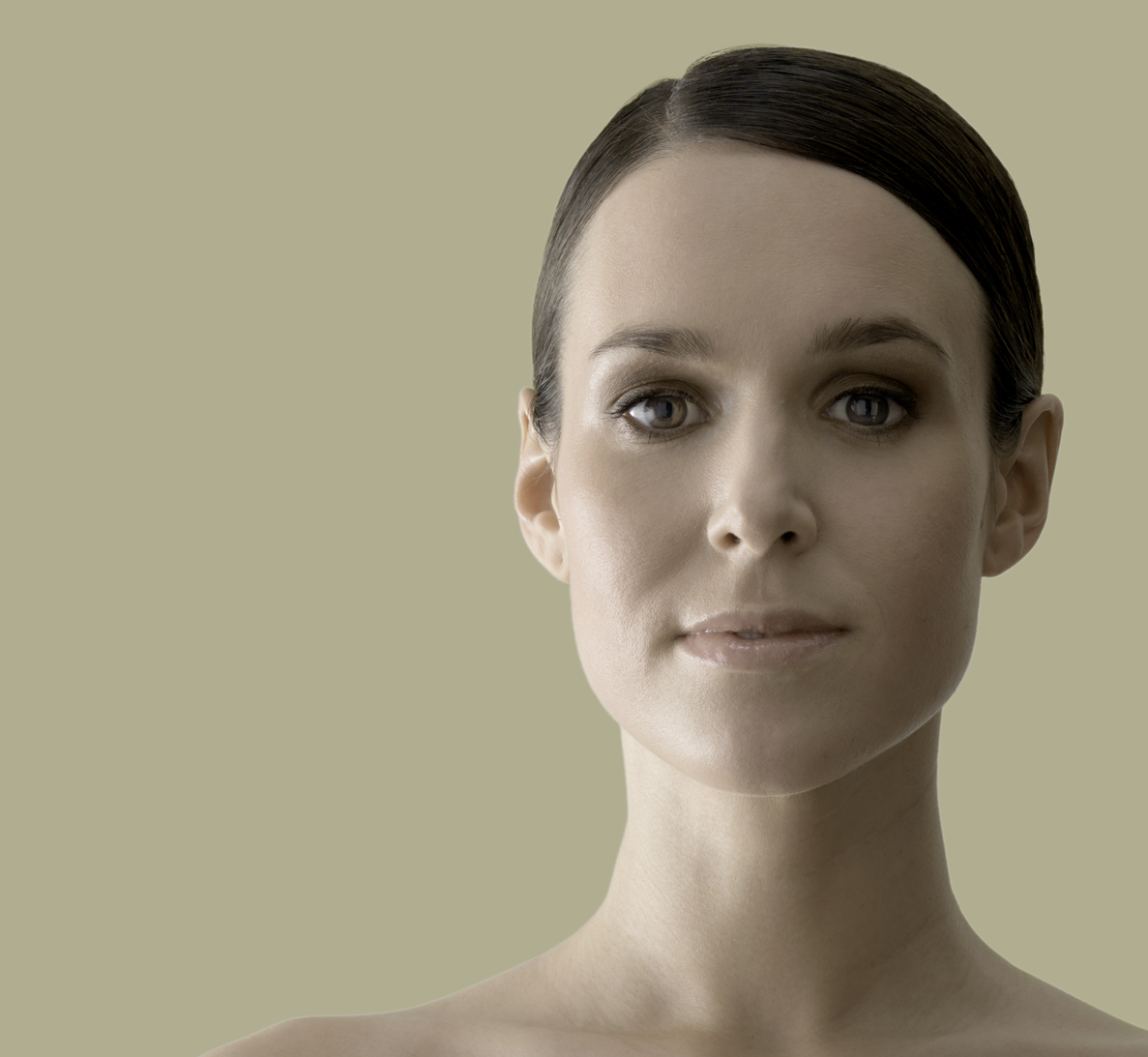
The first visible signs of aging often appear on the face. Over time our skin loses elasticity and creates wrinkles. The face loses its youthful volume and by the effects of gravity, tissue sinks down from its original position. Fatty tissue disappears in some areas and accumulates in others. The combination of these factors creates the typical signs of aging on the face and neck, such as forehead creases, dark rings under the eyes (‘tear trough deformity’), sunken cheeks, deep nasolabial folds, as well as a double chin. Patients that seek to have a facelift often suffer from the fact that their external appearance does not reflect their inner sense of self.
Remarks from colleagues, or friends and family about their tired appearance can also exacerbate the problem. The aim of a facelift is to create a younger and fresher appearance that reflects the patients’ self-perception.
The popular term ‘facelift’ embraces a variety of different surgical procedures with the aim to smooth wrinkles on the face and neck, restore lost volume, remove excess volume and skin and lift sunken tissue. Generally speaking, the term ‘facelift’ means a lifting procedure of the cheeks and neck areas. In contrast to ‘mini-lifts’ and ‘midi-lifts’ that are mostly limited to a superficial tightening of skin, modern comprehensive facelifts (SMAS lift, deep-plane or composite facelift), besides removing excess skin and tightening skin, work beneath the skin repositioning muscles and soft tissues to their original position to create natural, long-lasting results. A fresh, youthful appearance is not only achieved through smooth skin, but also through the proportions, volume and contours of a young face. This can be achieved with a multi-layer facelift. Sunken areas are lifted and refilled with injections of the patients’ own fatty tissues or replaced with artificial substances (fillers or implants) to recreate a youthful face. Excess fatty tissue, especially on the neck and chin, can be removed minimally-invasive by liposuction (lipo-shaping, lipo-sculpting) in order to improve the facial contours. If the aging is restricted to the central part of the face, then this can be corrected via an isolated mid-facelift. With a minimally-invasive endoscopic brow lift, you can remove creases on the forehead and lift sunken eyebrows without leaving any visible scars. Isolated corrections of the brow position are possible with a brow or temporal lift. Superficial skin blemishes, like age spots or fine wrinkles can also be corrected in the scope of a facelift using special techniques, like chemical peeling or laser treatment.

Considerations
When to consider a brow or forehead lift:
- You suffer from the aging effects to your face or neck.
- You are affected by: sunken eyebrows, dark rings or bags under your eyes, sunken cheeks, deep nasolabial creases or wrinkles around your mouth, a double chin, loose and wrinkled skin on the face and/or neck.
- Your appearance does not coincide with your actual age (discrepant self-perception).
- Face and/or neck have lost their youthful contours and their volume.
- Your formally oval face has become increasingly rectangular.
- Your skin is irregularly textured; you have coarse pores, or blemishes and have many fine lines or wrinkles.
Consultation
A prerequisite to a successful operation is careful planning. This starts with a personal consultation at the AARE KLINIK.
- Communication of wishes and expectations ascertain what you would like to improve.
- Explanation of the possibilities and scope of the operation.
Examination:
- Medical history is taken.
- Physical examination is performed.
- Digital photos are taken.
- Bone structure and soft tissue are assessed.
- Thickness, texture and elasticity of skin is tested.
- Based on this an individual treatment plan is drawn up and goals of the operation are discussed and defined.
- A facelift is an extremely versatile operation that can be tailored to the specific needs of each patient.
- It often makes sense to combine several treatment methods to achieve the best possible result.
- The pros and cons of different surgical procedures with possible risks —and how to avoid them—are discussed.
- The personal and financial cost of having a facelift have to be carefully considered before the definitive treatment plan is agreed upon and documented.
To plan the operation and to make a risk assessment we require:
- Full medical history (pre-existing conditions and previous surgery).
- Current diseases (high blood pressure, diabetes, thyroid dysfunction).
- Allergies or aversion to medications.
- Any important medical reports.
- Please bring any important medical information along to the consultation.
Procedure
A facelift needs to be tailored to the individual characteristics and needs of the patient. Thus every procedure differs. Common to all facelift techniques is that excess skin is removed from the neck and cheeks and that sunken tissue is lifted and lost volume is replaced. The skin incisions are typically made in front and behind the ears. Depending on the extent of the excess skin, the incisions can be extended to the scalp and along the hairline. Scar-reducing surgical techniques (short scar facelift) avoid incisions behind the ears. More important than the length of a scar is its quality and the optimal positioning within the natural folds of the skin. A well healed and appropriately positioned scar will hardly be visible later on.
For a satisfactory outcome, the concealed surgical corrections made beneath the skin are as important as the visible scars. Once incisions have been made and the skin is lifted to varying degrees, the deep layers of connective tissue, fat and muscle (SMAS) are partially mobilized, lifted to their original position and fixed again. Excess fat is removed from the chin and neck, and neck muscles are tightened if necessary.
A natural appearance and long lasting result are mainly dependent on the correction of the deep-layered structural tissues. As skin only has a covering and not a structural function, a permanent effect cannot be achieved by the tightening of skin. Only excess skin is removed. Through the specific treatment of skin and deep tissues of the face, youthfulness can be returned without creating an artificial, ‘lifted’ appearance. With this objective, numerous facelifting techniques have been developed, which vary in the treatment of skin and deep tissue layers (SMAS facelift, deep plane facelift, volumetric facelift).
Risks
Serious complications after a facelift are extremely rare. Nevertheless, before a facelift each patient should be informed of all the benefits, risks and possible complications involved. Lighter complications that usually heal without long-lasting consequences include bruising (hematoma) and prolonged swelling. Severe bruising (hematoma) should be treated and possibly surgically removed, as this may reduce blood flow to the delicate skin of the face and neck. The risk of circulatory disorders of facial skin is increased in smokers, which is why smoking should be avoided for 2 weeks before and after the procedure. Numbness of facial skin is usually temporary and disappears after a few weeks. As a side effect of the procedure on the sensitive hair follicles you might experience a temporary thinning of hair. This is why you are requested to avoid the use of chemical products (bleaching or dying) on your hair for at least 4 weeks after surgery. After a dermabrasion, laser treatment or chemical peel, redness of the skin might persist for several weeks or months, requiring makeup to conceal it. This must be considered when planning the date of the operation. A change in skin pigmentation might also occur after the procedure. In most cases facial scarring is very inconspicuous, but even with the use of fine suturing techniques, it is unpredictable as the healing process varies for each individual person. The injury of vessels and nerves are preventable with the use of proper techniques, but cannot be ruled out due to anatomical variations, or due to previous surgery. When a facelift is combined with eyelid surgery, as is often the case, then the eyes might be temporarily prone to dryness. This can be treated with eye drops.
General risks from facelift surgery include:
- Haematoma (bruising), bleeding and swelling
- Seroma (accumulation of wound fluid)
- Healing problems or infection
- Wound breakdown/dehiscence (separation of wound edges)
- Injury of nerves or vessels
- Numbness in area of operation (temporary or permanent)
- Circulatory problem of face and neck skin (skin slough)
- Scars
- Slight asymmetry
- Unsatisfactory aesthetic result
- Secondary surgery
- Thrombosis or embolism
Overall a facelift is a safe procedure when undertaken by an experienced plastic surgeon and patients are mostly satisfied with the results. You can help to minimise the risks by following the advice of your surgeon.
Preparation
Our aim is to make the time before and after your surgery as comfortable as possible. By following a few recommendations you can support our care:
- To aid the healing process, avoid smoking for two weeks before and after the operation.
- Avoid medication that increases the risk of bleeding, like aspirin, non-steroidal anti-inflammatory drugs, as well as vitamins and homeopathic remedies for two weeks prior to the operation.
- Prior to dermabrasion, laser treatment or a chemical peel, you may have to perform a pre-treatment with special ointments, and possibly antivirals.
- If you have short hair, it may be advantageous to let it grow before surgery, to facilitate the concealment of fresh scars.
- All chemical hair treatments (dyeing, bleaching) should be performed before surgery, as you should refrain from having any such treatments for at least 4 weeks after surgery.
- Facelift surgery is mostly performed as an outpatient procedure under general anaesthesia. Make sure that you can be collected and cared for by someone for 24 hours after the procedure.
Day of surgery
In most cases facelift surgery is performed under general anaesthesia as an outpatient procedure or with an over-night stay at the AARE KLINIK. In individual cases, when necessary, the procedure can be undertaken as part of a short inpatient stay in an affiliated private hospital.
- During surgery you will receive various medications for your wellbeing.
- Depending on individual cases and the length of operation, you will have a local anaesthesia with sedation (twilight anaesthesia) or a general anaesthesia.
- For your safety, your heart rate, blood pressure, oxygen supply etc. are monitored during the operation.
- After surgery the fresh sutures will be covered with ointments and a light cotton or gauze dressing
- You will be taken to the recovery room, where you will have continued monitoring until you awaken and are able to get up.
- After a few hours you will be allowed to return home.
- Already on the day of the surgery you should get up regularly for a few minutes in order to minimise the risk of thrombosis.
- You can use mild pain relief that reduces swelling and can be continued for the first few days after surgery.
- You should have someone to care for you continuously for 24 hours post operation.
- We also offer the possibility for a short inpatient stay at the AARE KLINIK in a single room with a nurse if required.
After surgery
- It is important to realise that recovery from an operation varies for every individual.
- During the first days after facelift surgery you should keep your head and upper body in a raised position and place moist gauze over the eyes to prevent swelling.
- However, cooling of the cheeks and neck with ice should be avoided, in order not to compromise skin circulation.
- You should not perform any strenuous activities or physical exercises (sports) for several days after the surgery.
- Only take prescribed pain medication and do not take medication like aspirin.
- After dermabrasion, laser treatment or chemical peeling you might be required to use ointments or to take antiviral medication.
- During the first 2–5 days after the procedure, you might experience significant swelling of the facial skin, which will usually subside after 2–3 weeks.
- You might experience a slight loss of hair in the area of the surgery. It might take a few months before the hair grows again.
- Typically you will be back on your feet a couple of days after surgery and be able to resume your daily activities.
- Bandages will be removed a few days after surgery, after which you can take showers again.
- Full baths and excessive heat, however, should be avoided for several weeks until swelling has subsided.
- Most sutures are removed within a week.
- Due to the fact that the swelling of facial skin lasts longer, the important appointments should be scheduled at the earliest 6 weeks after surgery.
- After removal of the sutures we recommend the start of an intensive skin and scar care with rehydrating creams and light massage.
- The fresh scars should be protected from UV radiation for at least 6 months, in order to prevent increased pigmentation.
- Raised scars may require treatment with special silicone gel and cortisone injections in some individual cases.
- After surgery you will be examined at the AARE KLINIK at regular intervals, so that the healing process can be assessed until the final surgical result is achieved.
Outcome
- The healing process is gradual and it will take several months before the surgical result can be fully determined.
- Facial scars usually heal quickly and unobtrusively, but you may be flushed for a few weeks or have slightly darkened pigmentation. This usually fades with time until it is barely visible.
- Swelling may persist for several weeks, as well as redness after abrasion, laser resurfacing or chemical peels.
- In some cases hair regrowth may take a few months.
- A facelift gives the face a fresher expression and improves face and neck contours and skin quality. As a result of this, the feeling of well-being is increased and your external appearance brought back in line with your personal feeling.
- The result of a facelift is usually long-lasting. The effect can be subtle or bold, depending on the desired result and surgical technique used.
- The aging process continues and can be accelerated by sun exposure and other factors such as smoking.
- Both the individual aging process, as well as lifestyle have an impact on the long-term outcome and possibly whether another facelift is required at a later date.
Costs
A facelift is undertaken in order to improve appearance, making it an aesthetic procedure, in which case the costs have to be carried by the patient. Rare exceptions are serious facial asymmetry, such as after facial nerve paralysis (Bell’s palsy), in which case a unilateral facelift may be medically indicated. In these cases the costs are carried by medical insurance, but the decision lies with the individual insurance company, which is why a cost estimation should always be given before an operation. The cost of a facelift is highly variable and depends mainly on the extent of surgery and on where the procedure is performed (AARE KLINK or hospital). A more accurate cost estimate can therefore only be made after a personal consultation.
The overall costs are made up of:
- Surgical fee (including consultation and post-operative care)
- Anaesthesia fee
- Technical infrastructure costs (AARE KLINIK/hospital)
- Inpatient hospital costs
- Medication
- Diagnostics (laboratory, ECG, scans, etc.)


